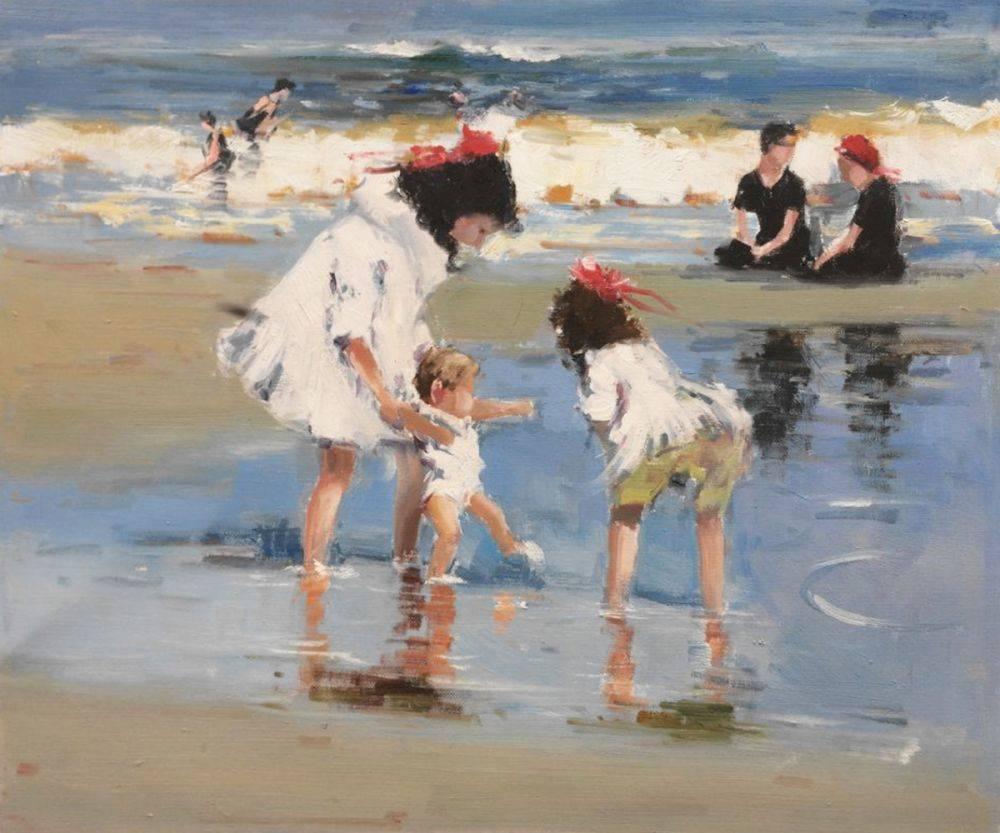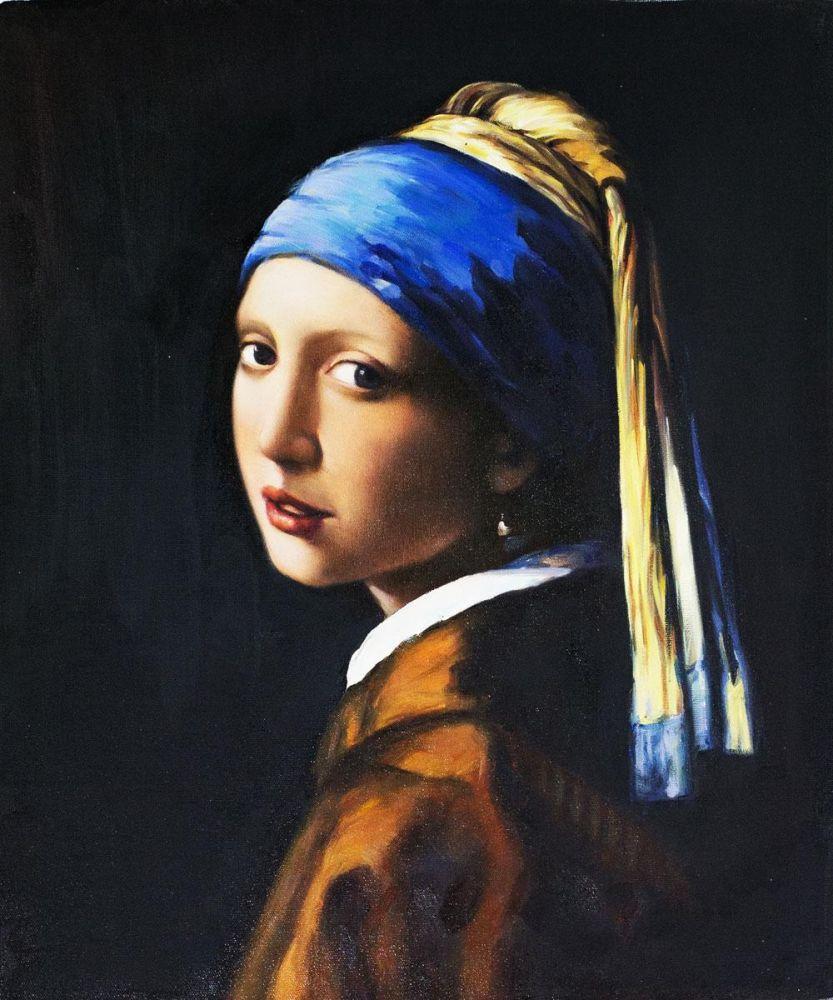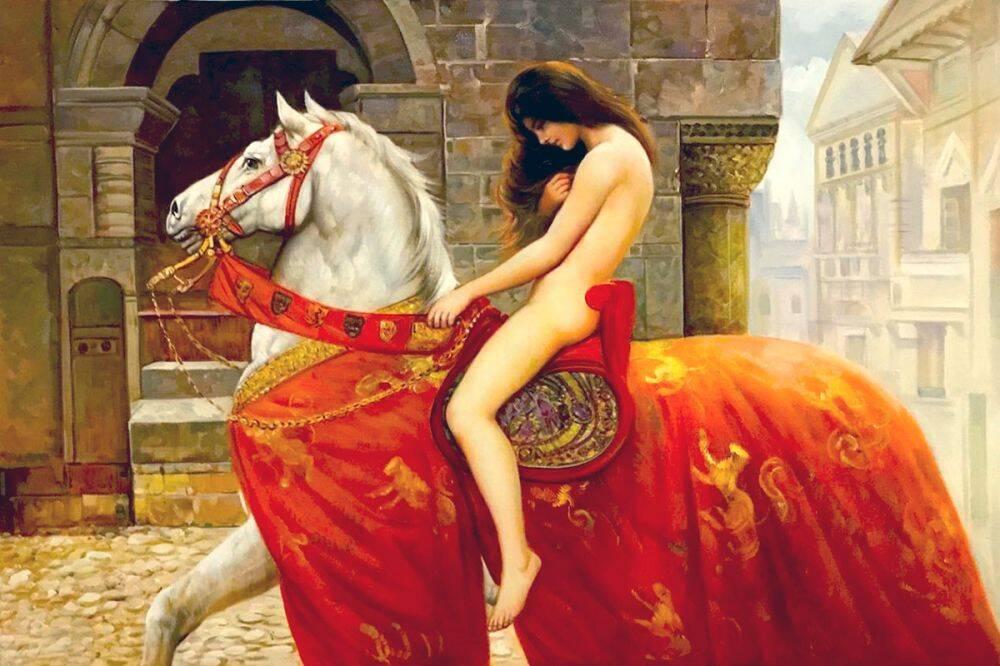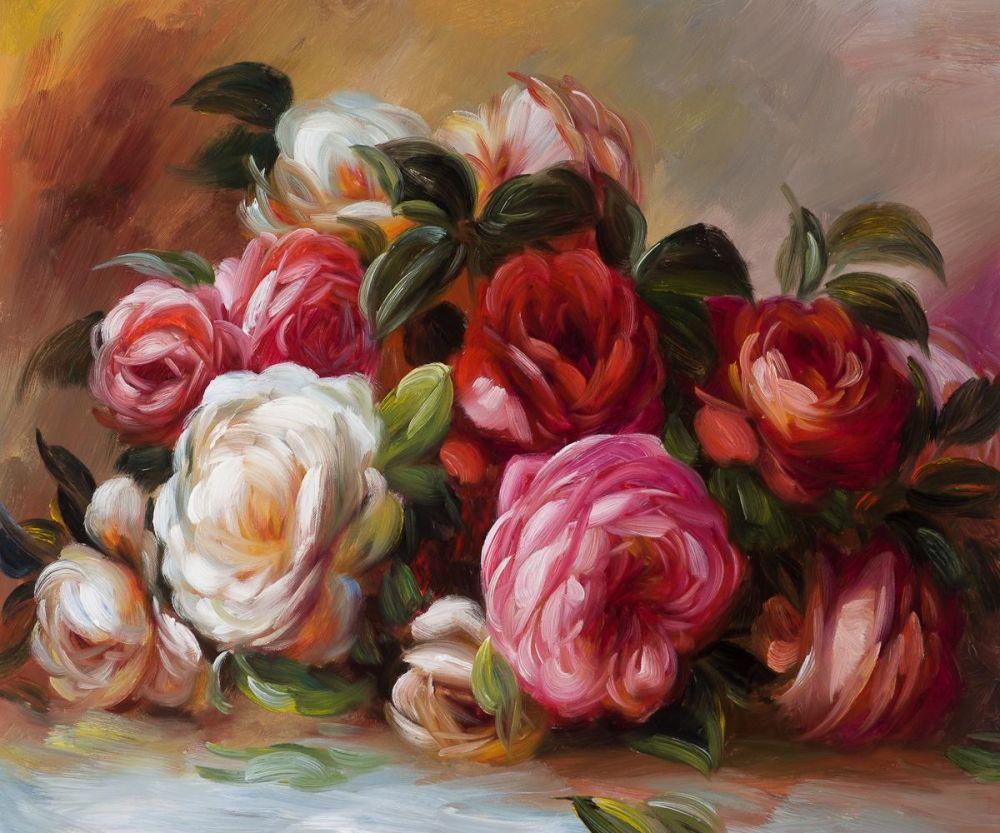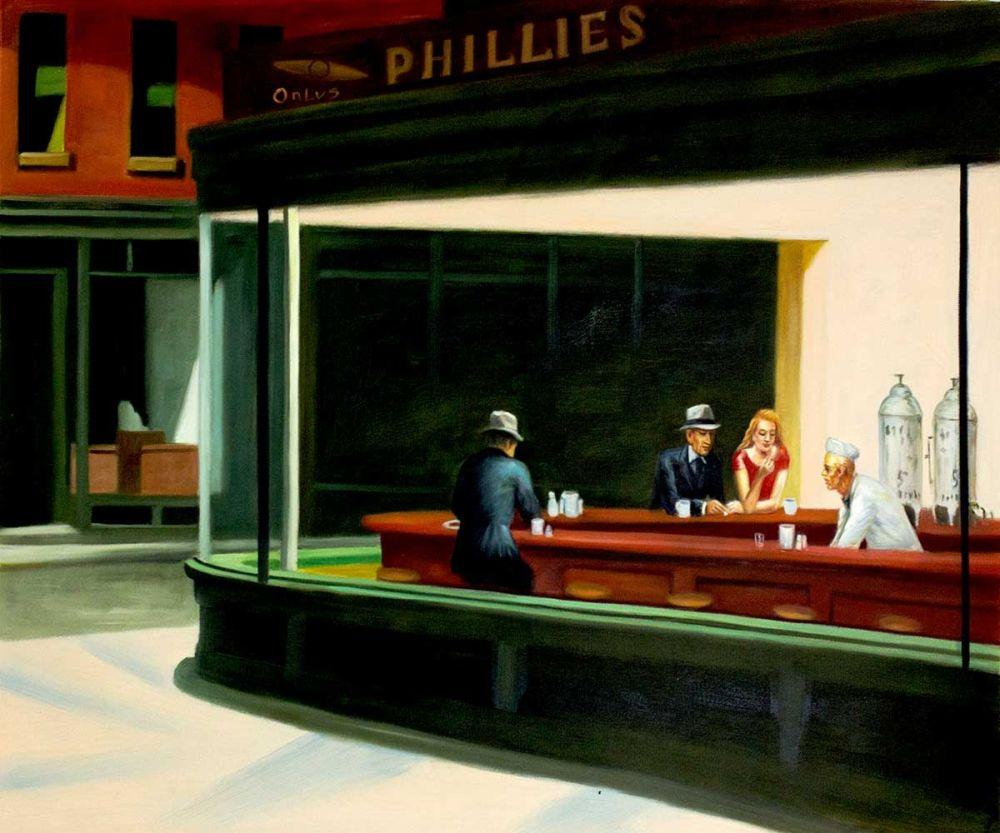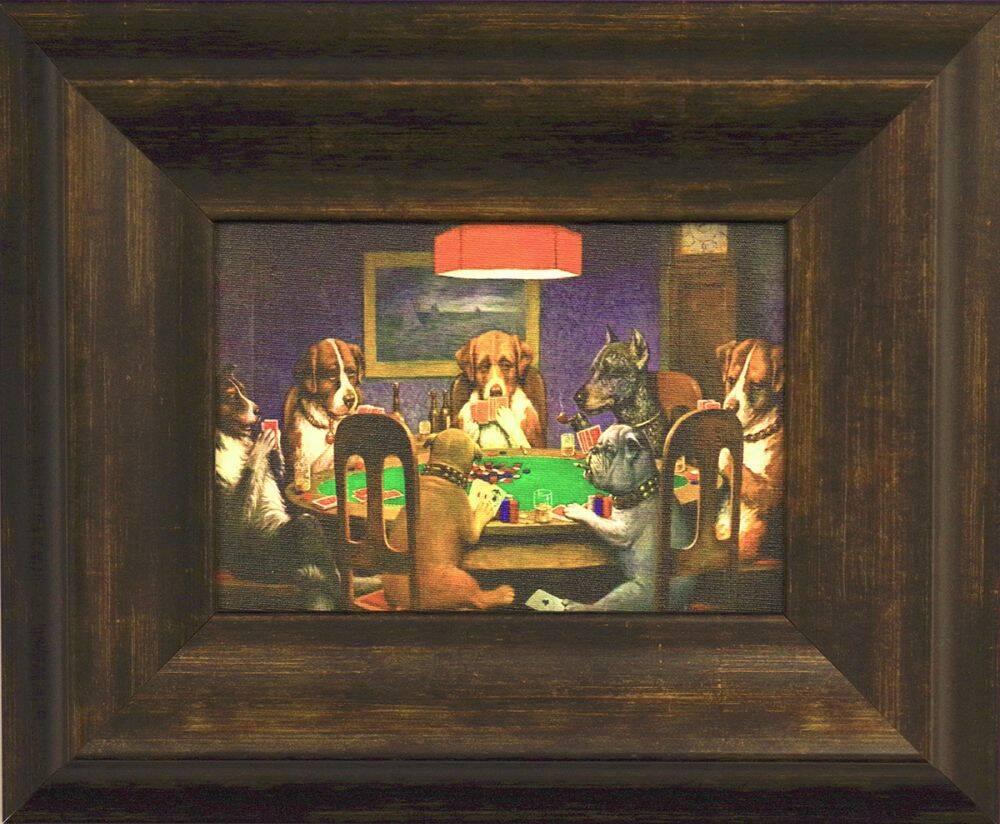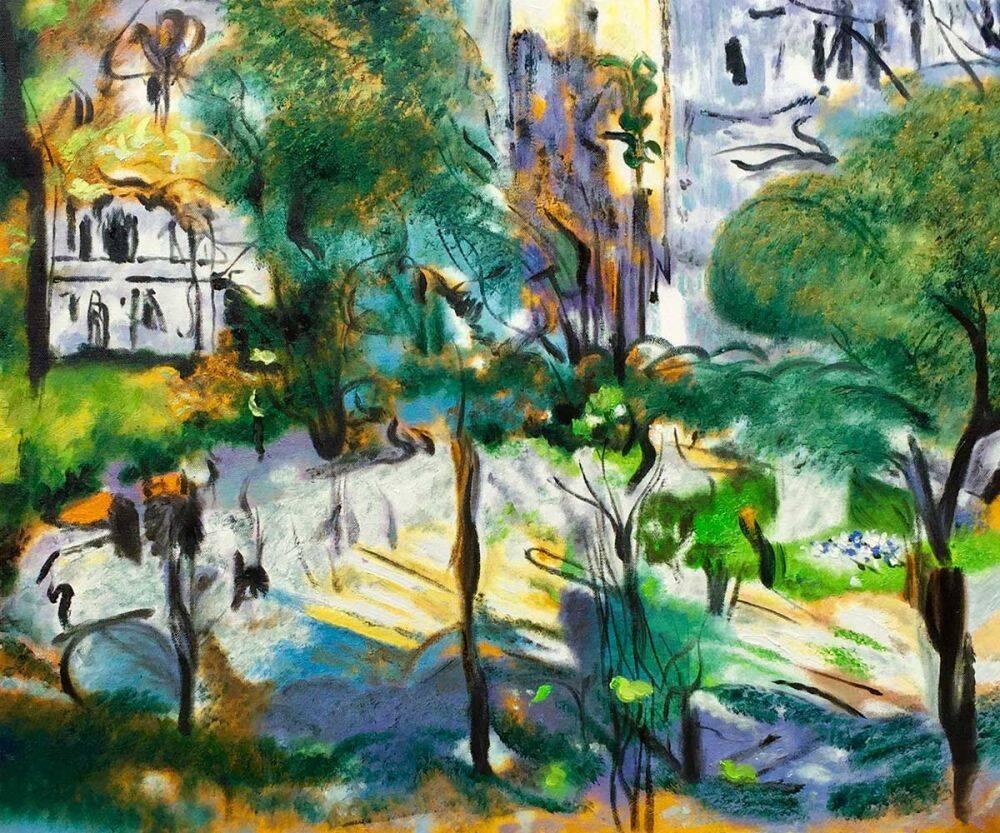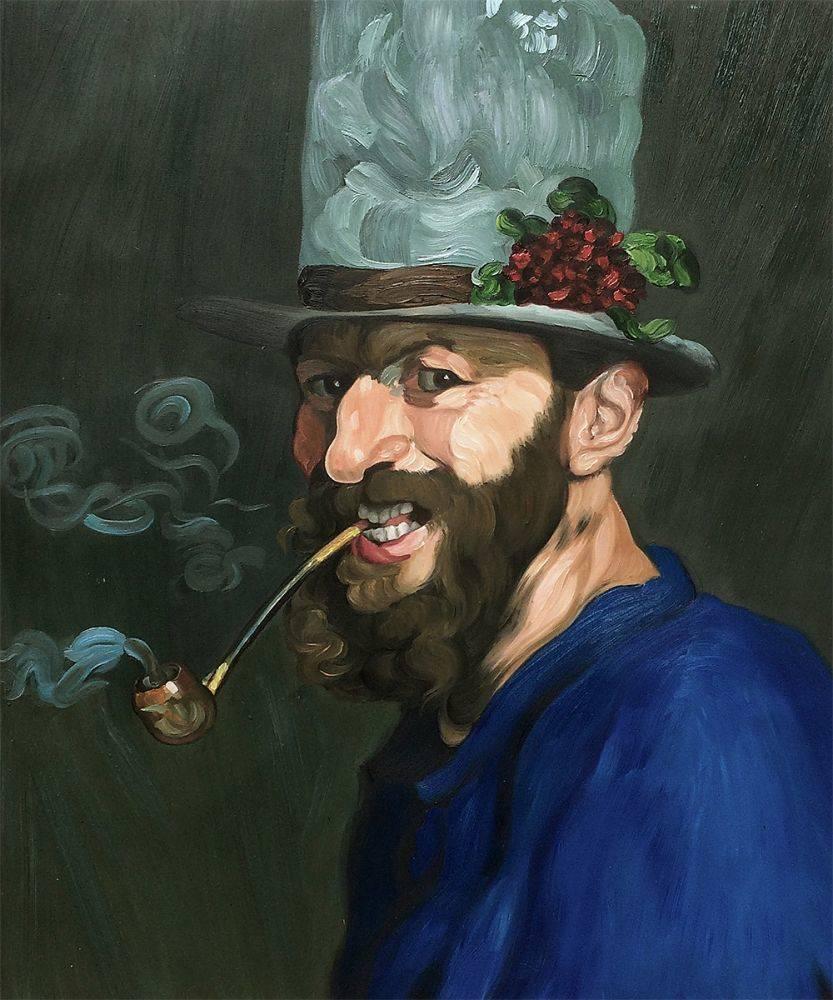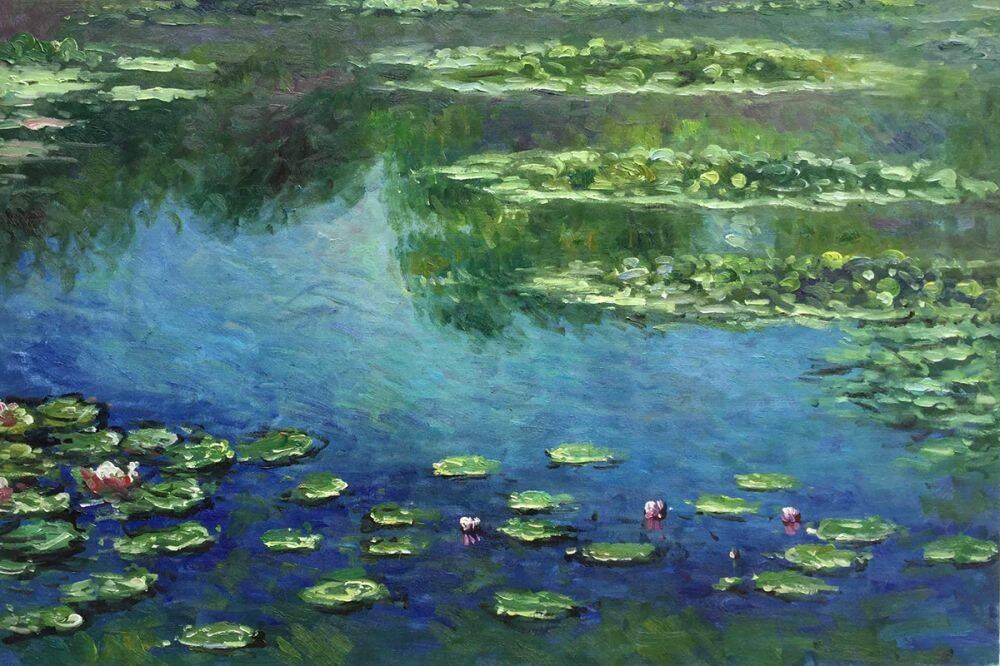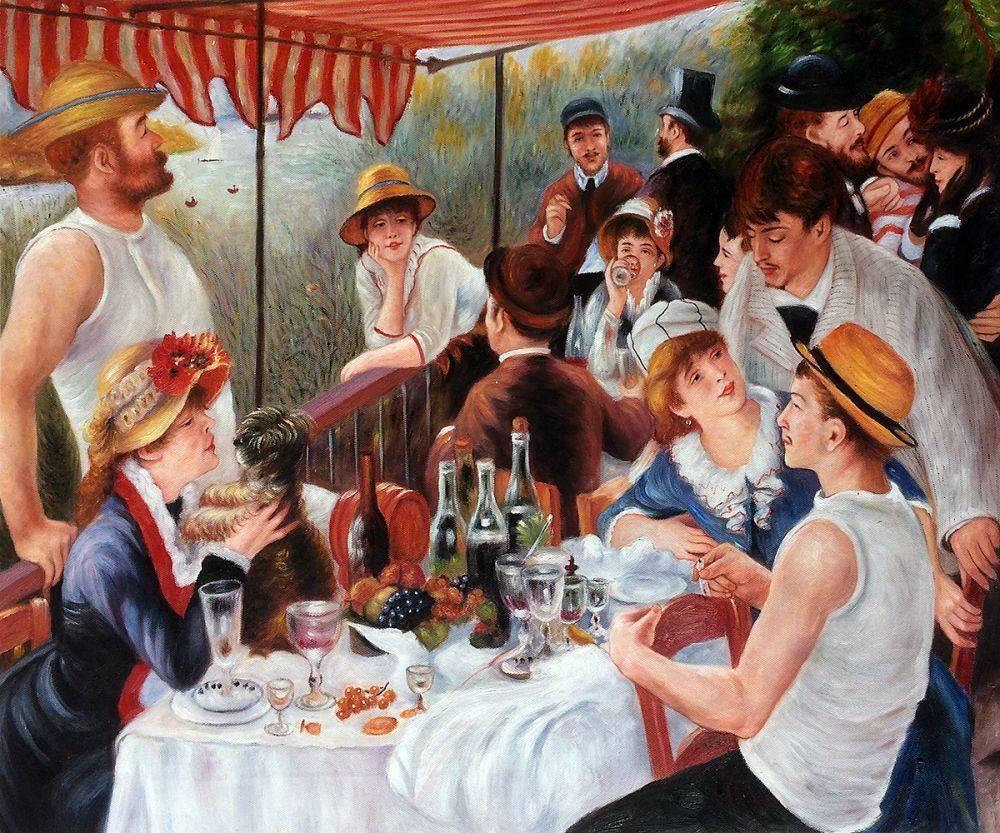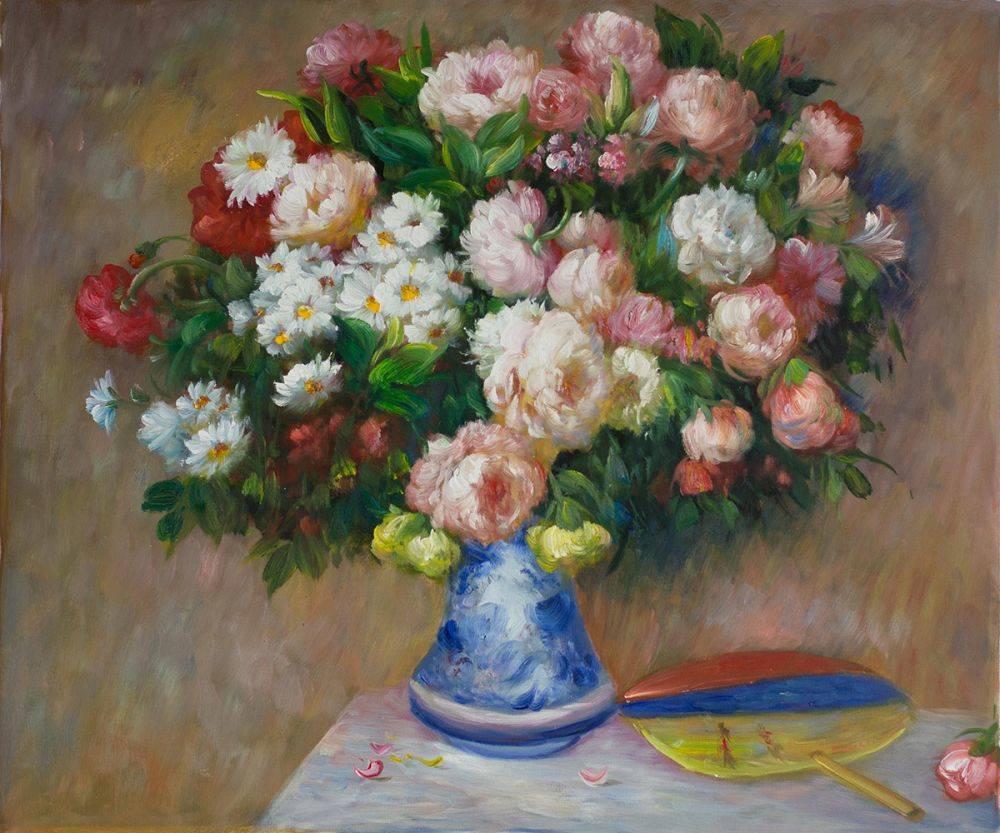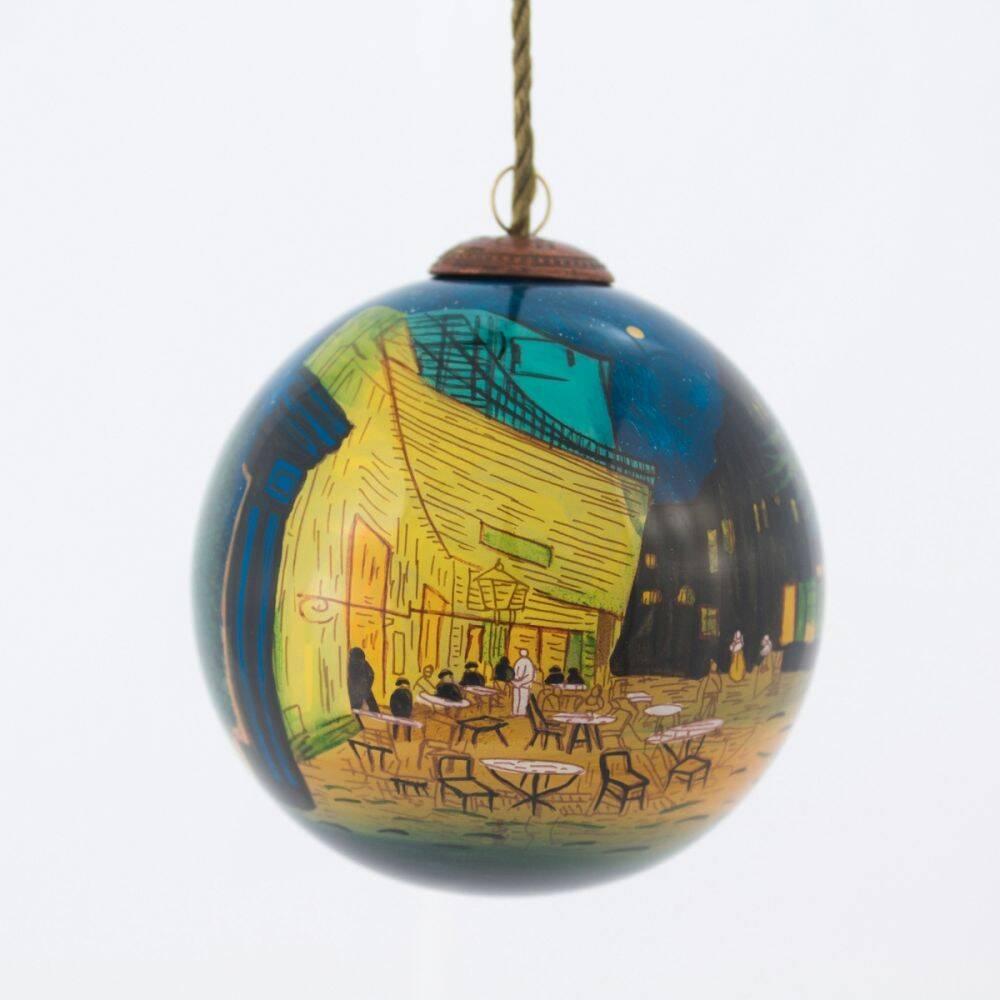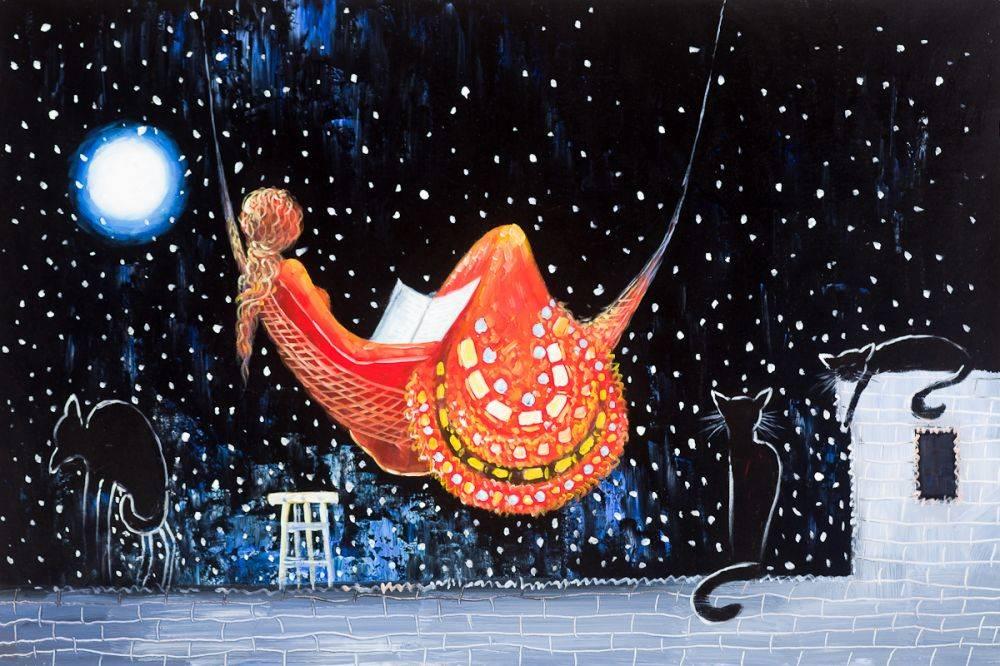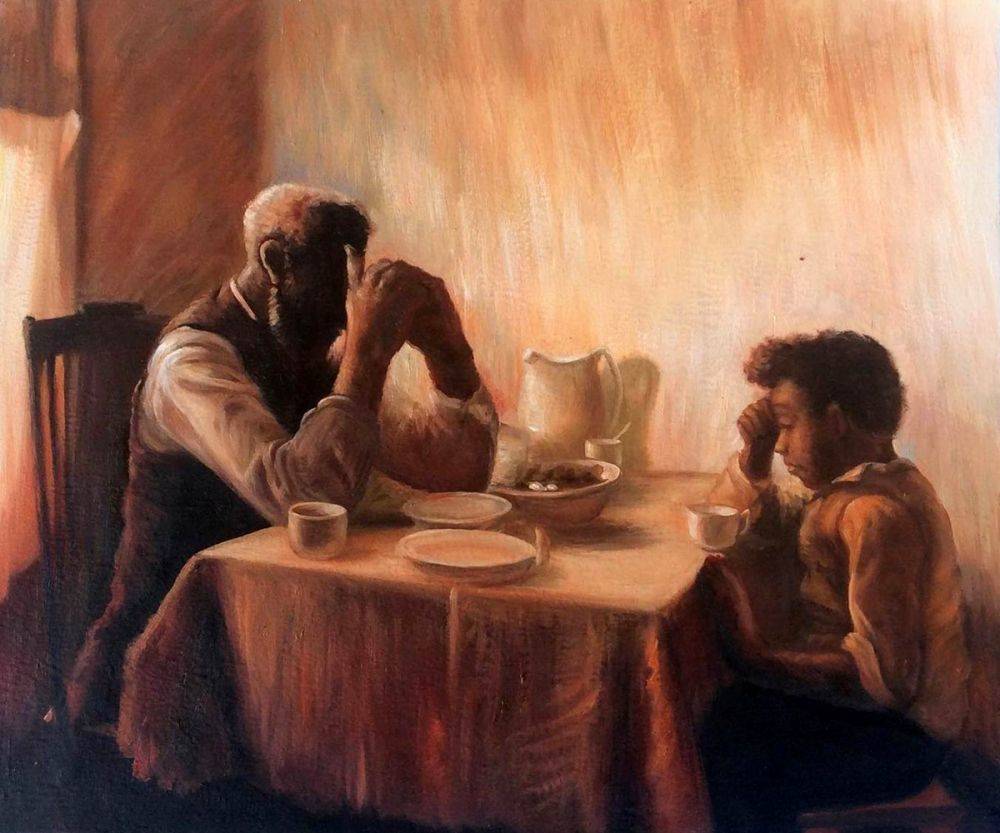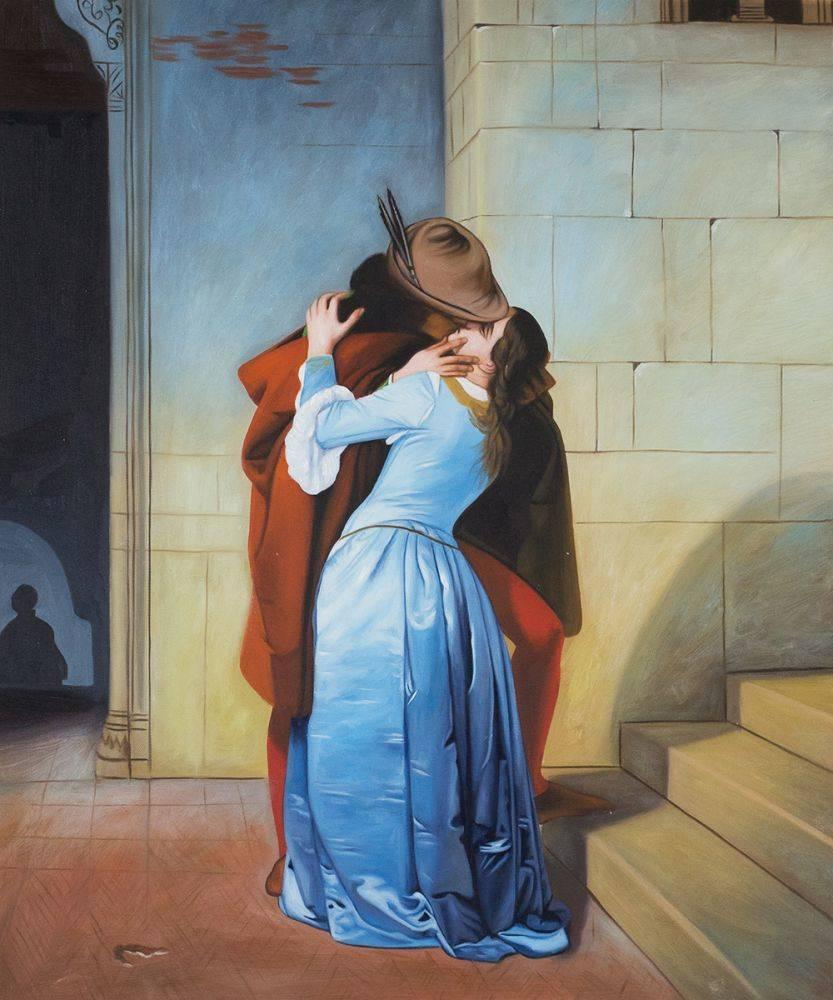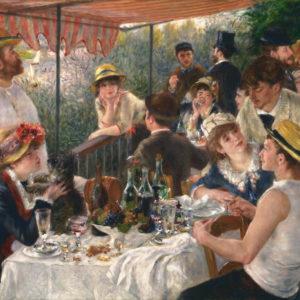Art
Art & Decor Trends
Facebook stories
Hot new artists
overstockArt.com
Gifts for Everyone
We here at overstockArt understand how difficult it can be to find just the right gift for those you love. That’s why we have compiled a short list of some of our favorites for everyone in your life. They include classics from some of the greatest Impressionism, Symbolism, and Realism artworks. Hopefully our little list helps you find the right piece of art for your special loved one. Also, feel free to browse our Gift Center for even more ideas.
For Mom
Young Girls at the Piano- Pierre Auguste-Renoir
Commissioned by the Musee du Luxembourg, this painting is part of a series. Renoir produced three additional versions of this portrait with subtle variation of light and composition. Completed in 1892, the lovely scene depicts two young girls in a bourgeois home enjoying the piano. Renoir creates a quiet and intimate scene by tight composition of the girls and their thoughtful expressions.
Children Playing at the Seashore- Edward Henry Potthast
In his Children Playing at the Seashore canvas, we see a lighthearted vision of young children guiding a small baby into the shallow puddles left by the ocean’s waves. There’s a gentle airiness to the scene, balanced by the two dark figures seated in the background. Painted during one of his summer trips to Long Island, Potthast perfectly captures three small children playing at the seashore, with the carefree innocence of youth. With his soft wash of colors and dreamy, flowing brushstrokes, you can almost feel the warm, gentle breeze.
For Dad
Inspired by a corner diner on Greenwich Avenue, Nighthawks by Edward Hopper is a seemingly simple scene with a strong, borderline eerie atmosphere. On the surface, it depicts three customers and a waiter at the bar, with then-new fluorescent lights beaming onto the empty street. But closer inspection reveals none of the night owls are speaking or even making eye contact. The glass window and lack of a visible entryway combine to send a powerful message about being alone even in a large city.
Composition VII- Wassily Kandinsky
Wassily Kandinsky was a groundbreaking artist for whom the term ‘abstract expressionist’ was coined, more than a decade prior to the rise of American artists like Jackson Pollock. Inspired by the colors of Fauvism and Impressionism, Kandinsky’s goal was to use painting as an emotional language. Painting was a spiritual activity for him, and he practiced abstract art to move beyond physical boundaries. He wanted to mimic music with his paintings. The way music could call to mind images and colors; he wanted to create sound with his shapes and colors. This is clearly expressed in Composition VII, even in the name of the piece. The abstract shapes in many different colors and a swirling pattern create a “noisy” image, and might call to mind an orchestral composition.
For Sister
Branches of an Almond Tree- Vincent van Gogh
Known as a prolific Post-Impressionist, Van Gogh produced many paintings that were heavily biographical. Vincent van Gogh’s restless spirit and depressive mental state inspired his artistic work. Between 1888 and 1890, one of Van Gogh’s favorite things to paint was blossoming almond trees. Van Gogh’s almond tree paintings represent his search for calm amidst torment and symbolize a break from the more rigid style he took in Paris.
Girl with a Pearl Earring- Johannes Vermeer
Not much is known about Vermeer or this painting, but onlookers and experts can agree on one thing – it is absolutely stunning. Girl with a Pearl Earring was competed in 1665, and is often referred to as the Dutch Mona Lisa thanks to its similar mysterious shroud and public fascination. Its original name in Dutch is Het Meisje met de Parel. Many critics think that it was never meant to be a portrait and is often referred to as the “Mona Lisa of the North” or the “Dutch Mona Lisa.” Give a piece of history with this stunning painting by Dutch artist Johannes Vermeer.
For Brother
The Great Wave Off Kanagawa-Katsushika Hokusai
The power of nature is beautifully captured in this piece. Originally created as a woodblock print sometime around 1830, this masterpiece features the Japanese Ukiyo-e style. In addition to being Hokusai’s most famous work, it is one of the most recognizable works of Japanese art. With a towering wave about to crash into the sea and Mount Fuji in the background, this wave painting is a testament to the impressive magnitude of natural forces.
Stag Night at Sharkey’s- George Wesley Bellows
While prizefighting was illegal in New York City in the early part of the twentieth century, underground fight clubs like Sharkey’s prospered while catering to the blood lust of enthusiastic spectators. Bellows uses the comparison of stags locked in combat to relate the violent world of boxing to violence in nature. The spectator’s expressions are contorted and just as frenzied and passionate as the fighters themselves. Known for bold depictions of urban life in New York City, Bellows captures American pastimes based on his love of athletics. Bellows’ style mixes dark atmospheres with bright light and geometrical shapes with long brushstrokes giving his scenes a sense of perpetual, fluid motion.
For Wife
Discarded Roses – Pierre Auguste-Renoir
Discarded Roses is one of the most moving pieces from Renoir’s later period. Its symbolism is apparent, especially considering that Renoir was approaching the final years of his life. Though categorically a still life, Discarded Roses feels as though it has movement thanks to the light and shadow created by the artist’s Impressionist techniques. Renoir’s beautiful depiction of the roses, including a luxurious display of texture and color, is something truly stunning to behold.
Although he was better known as a Post-Impressionist painter, Paul Cezanne began his career by creating more traditional Impressionist pieces. Dahlias is an excellent example of the way in which Cezanne was influenced by Impressionist techniques. This piece is striking in its simplicity at first glance, yet it also has an incredible level of detail when viewed more closely. The quick brushstrokes and rich colors hint at the evolution which would eventually develop in Cezanne’s work.
For Husband
Boulevard Saint-Michel- Jean Francois Raffaelli
In depicting one of the most famous streets in Paris, Jean Francois Raffaelli left nothing to chance. Every detail is perfectly captured in Boulevard Saint-Michel, a beautiful Realist painting created in 1918. The quiet architecture of the buildings stand in contrast to the bustling city street below; this also serves as a contrast between the long-standing historical structures of the city and the quickly modernizing social world of that time. With Paris known as a leading destination for progressive arts and culture, this Realist scene takes on a deeper meaning that shows just how fast things were changing for Parisians in the early 20th century.
Self Portrait with a Pipe- Louis Anquetin
Louis Anquetin painted Self Portrait with a Pipe in 1892. Anquetin was born in Etrepagny, France, but later moved to Paris. In Paris, he met some of the greatest art figures of the time period such as Henri de Toulouse-Lautrec, Fernand Cormon, Emile Bernard, and Vincent van Gogh. Anquetin and Bernard developed a style call Cloisonnism. Cloisonnism uses bold flat colors in shapes separated by dark thick lines. This style was inspired by stained glass and the Japanese woodblock trade of Ukiyo-e. This self-portrait takes a more classical approach without the dark thick outlines, but the bold flat areas of color are still shown with little attempt to blend into the shadows or highlights of his face.
For Friends
Luncheon of the Boating Party- Pierre Auguste-Renoir
Representing the reshaping of French society, as well as the strong Impressionistic movement in the late nineteenth century, Renoir harnesses the energy in this 1881 portrait of the times. Renoir paints Luncheon of the Boating Party with overlapping figures which project space on the canvas; while a sense of motion is indicated by the placement and expressions of the figures, he cleverly balances the portrait creating a feeling of intimacy and harmony.
There’s a reason that Italy is on so many travelers’ bucket lists. Café Italy, a painting by an unknown artist, captures the alluring appeal of this country in one simple yet captivating scene. This oil painting of Italy features an Impressionist take on a gorgeous coastal vista, complete with the brilliant blue waters of the Mediterranean Sea. The sloping hills in the distance and lush florals call to mind the intoxicating natural beauty of Italy, while the café in the foreground looks undeniably inviting. It’s the type of place where you can imagine spending hours just gazing out at the sea and sipping on a warm cappuccino.
For Newlyweds
The Kiss (Full View) – Gustav Klimt
With its incredibly elaborate attention to detail, The Kiss continues to be one of the most alluring and eye-catching works of art in history. Painted during Klimt’s Golden Period, it showcases his symbolic style with bold colors and intricate patterns. The painting depicts a couple surrounded by a gold blanket and ornaments sharing a moment of sheer passion – the perfect kiss. In the oil and gold masterpiece, the man appears standing as he holds the kneeling woman in his arms. The two seem to be positioned on a flower field, kissing, totally engaged with one another.
The Kiss by Francesco Hayez remains one of the most iconic Italian paintings ever. The Romanticism movement focused on personal emotion and individualism, rejecting rationality and idealization. This painting carries rich color, lush lighting effects, and a beautiful symbol of unity and affection. With high contrast of the dramatic lighting on the woman’s blue dress and the deep shadows under the man’s red cloak, this painting remains a superb example of Italian Neoclassical art.
For Children
Moon is a beautiful image of a night time landscape with only the glow of the moon for light. The artist Justyna Kopania, says when she paints she tries to show the world her art from various perspectives. What is seen through the eye of a child will be different than through the eye of a composer and she questions how different the world really is than from how it is perceived.
His most famous paintings were, and still are, his ballerina paintings. Star Dancer was one of Degas’s popular paintings from this period, during a time when he made extensive use of pastels for contrast, shadow effects and to capture humans in motion. The preciseness of her arms, head and feet is influenced Degas’ study of dance, and enhances the fantastic reality of the moment. Any young child’s imagination would be captured by this scene.
For Grandparents
Farm Garden with Sunflowers- Gustav Klimt
Gustav Klimt’s admiration for the Post-Impressionists is evident in Farm Garden with Sunflowers, one of his most colorful and lush floral paintings. The foreground is prominent, and the lively nature of the flowers is captured perfectly. However, Klimt manages to put his own stamp on this style by using especially vibrant colors and an incredibly high level of detail throughout the piece. It’s absolutely striking in person, and one can easily become lost in all those beautifully crafted details in each flower.
The Banjo Lesson- Henry Ossawa Tanner
One of Tanner’s most famous and widely recognized painting is The Banjo Lesson. The original painting was created in 1893. Today the painting has been carefully recreated detail-by-detail, color-by-color to near perfection. Henry Ossawa Tanner (1859 – 1937) was an African-American artist. He was the first African-American painter to gain international acclaim. He moved to Paris in 1891 to study, and decided to stay there, being readily accepted in French artistic circles.

